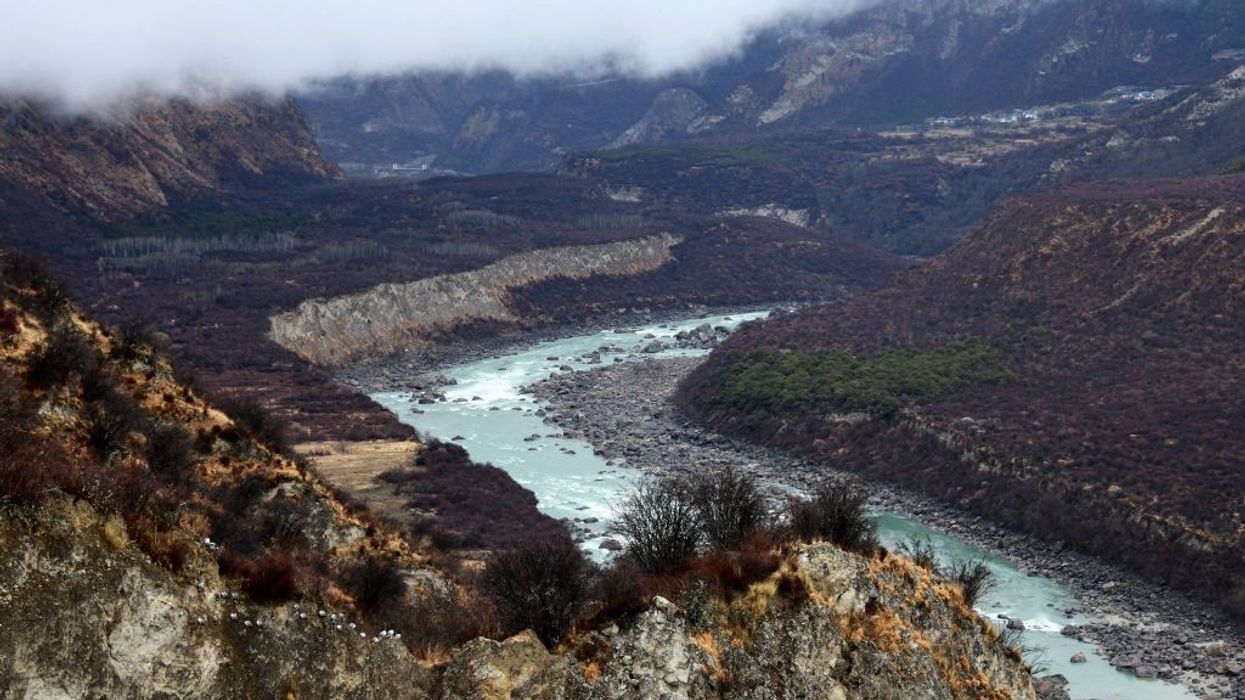CHINA has officially defended the construction of a massive hydropower dam on the Brahmaputra River in the sensitive ecological region of Tibet, insisting the project will not negatively affect downstream countries such as India and Bangladesh.
The ambitious initiative, announced last Saturday (19) by Chinese premier Li Qiang, marks the start of what is expected to be the world’s largest hydropower dam, located near Nyingchi City in the Tibetan autonomous region close to the disputed Line of Actual Control with India in Arunachal Pradesh.
The Brahmaputra River, known in Tibet as the Yarlung Zangbo, flows from this high plateau across northeastern India and Bangladesh, providing vital water for irrigation, drinking, and hydropower to millions. Given the river’s critical role, concerns have rapidly mounted in India and Bangladesh about the impact of this colossal Chinese project on water flows and the environment.
At a press briefing on Wednesday (23), Chinese foreign ministry spokesperson Guo Jiakun asserted that the dam construction “will not have any negative impact on the downstream regions.”
Guo said China has engaged in communication with India and Bangladesh, sharing hydrological data and cooperating on flood prevention and disaster mitigation. He stressed that the project is a sovereign matter of China aimed at generating clean energy, improving local livelihoods, and combatting climate change, with all phases—from planning to design and construction—adhering to strict ecological and industrial standards.
Chinese authorities also highlighted that water releases will be managed carefully to prevent disasters along the entire river. Guo added that the project supports regional cooperation to benefit communities along the river basin.
However, the dam’s scale and proximity to the border have alarmed Indian officials and environmental experts. Arunachal Pradesh chief minister Pema Khandu termed the dam a “ticking water bomb” and an existential threat surpassing even military risks.
In a recent interview, Khandu expressed deep mistrust of Chinese intentions, noting Beijing is not a party to any international water treaties that would legally bind it to share data or regulate river use. “No one knows what they might do,” he warned.
Environmentalists observe that the dam will halt the natural flow of sediments vital for sustaining fertile floodplains downstream, potentially disrupting agriculture and ecosystems in India’s Assam state and further south in Bangladesh.
Columbia University geophysics professor Michael Steckler pointed out that upstream detention of sediment could reduce soil nutrients critical for millions who depend on the Brahmaputra basin.
Furthermore, some experts caution that the dam site sits amid tectonically unstable terrain on the edge of the Himalayan seismic belt, making the construction prone to earthquake and landslide risks. The region already experiences glacial lake outburst floods and severe weather events that could compromise dam safety.
Historically, water sharing on the Brahmaputra has been contentious yet relatively cooperative. Since 2006, India and China have operated the Expert Level Mechanism (ELM) to discuss transboundary river issues, with China providing hydrological data during monsoon seasons.
However, data exchange stalled following the 2020 border conflict in eastern Ladakh, complicating bilateral water management discussions. Hydrological data sharing was raised last December during talks between India's National Security Advisor Ajit Doval and Chinese Foreign Minister Wang Yi.
Contrary to fears of water diversion, experts stress that most Brahmaputra water comes from monsoon rains in India and Bangladesh, not from Tibetan glaciers. The project is reportedly a “run-of-the-river” scheme, implying that water is used primarily for power generation without significant storage or diversion.
Indian hydrologist Sayanangshu Modak noted that India’s own dam proposals on the Siang River—the Brahmaputra’s name in Arunachal Pradesh—are part of efforts to assert upstream use rights and prevent unilateral Chinese diversion.
In Bangladesh, Chinese envoy Yao Wen reinforced Beijing’s assurance that the dam’s purpose is solely electricity generation and will not reduce water flow downstream, during talks with the country’s foreign affairs adviser Md Touhid Hossain on Monday (21). “China will not withdraw or use any water from the project,” Yao said, aiming to allay Dhaka’s concerns.
The dam plan dwarfs the existing Three Gorges Dam, currently the world’s largest, with an estimated cost of $170 billion and generating more electricity annually than Britain’s consumption. The project is designed to generate over 300 billion kilowatt-hours each year, enough to power more than 300 million people, and to provide stimulus to China’s slowing economy.
(Agencies)













